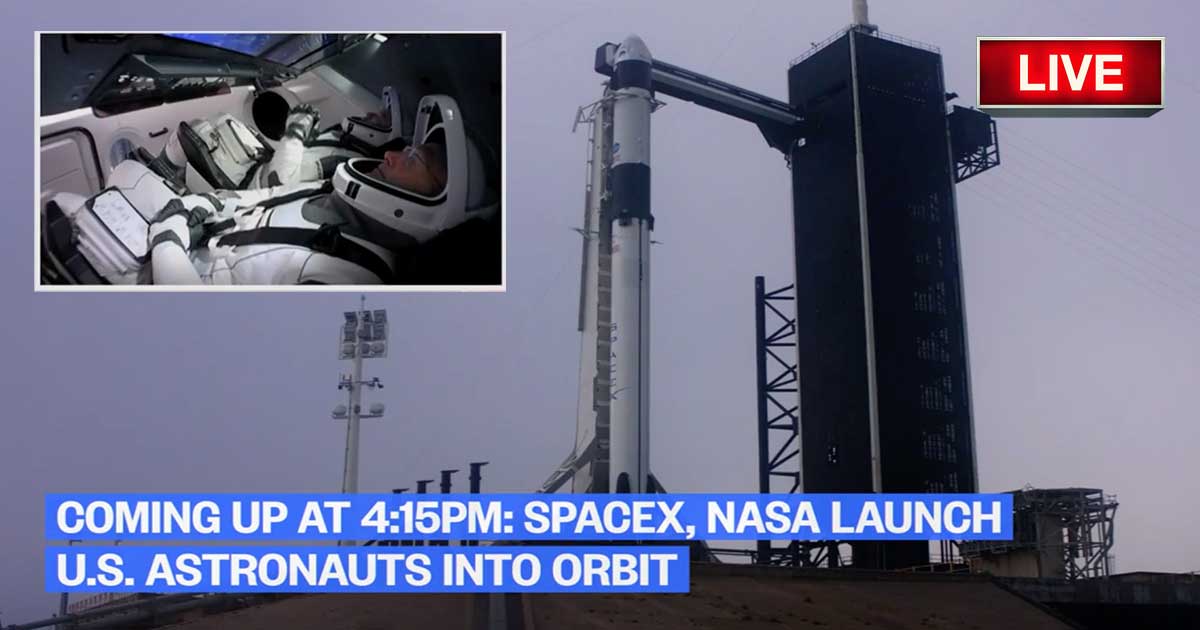Watch LIVE NOW: Space-X Takes Astronauts to Outer Space, a First in Nearly a Decade #LaunchAmerica

Nearly a decade has passed since the last launch of American astronauts from U.S. soil. Nine years ago, Space Shuttle Atlantis would take flight in 2011. Today, all of that is about to change as two NASA astronauts are preparing for flight.
The launch is scheduled for 4:33pm Eastern and can be seen live in the video down below.
The action will be happening at Florida’s Kennedy Space Center as government-funded space exploration meets the private sector. No spectators will be in attendance as the facility is still only open to essential personnel.
In this venture, two NASA astronauts have climbed aboard a SpaceX Crew Dragon. Their destination is the International Space Station.
The Dragon is the first astronaut hauler of its kind. SpaceX describes the spacecraft as follows:
“The Dragon spacecraft is capable of carrying up to 7 passengers to and from Earth orbit, and beyond. It is the only spacecraft currently flying that is capable of returning significant amounts of cargo to Earth, and will soon become the first private spacecraft to take humans to the space station.”
Arriving in Florida with a flyby of your dad’s spaceship on the launch pad… Priceless. #LaunchAmerica #CrewDragon pic.twitter.com/qnFIfPsHkM
— Karen L. Nyberg (@AstroKarenN) May 24, 2020
The first part of the mission will have the Dragon powering out of the lower atmosphere before attempting to land on an off-shore drone ship. The second stage will have the Dragon maneuvering further until it makes it to orbit. The trip is due to last about 17 hours in total. The crew’s scheduled arrival at the International Space Station is 11:40am on Thursday.
When arriving, commander Douglas Hurley and astronaut Robert Behnken will be greeted by a crew of three others. The mission has been said to be related to scientific research with the concepts of microgravity.
There isn’t an estimated time of return just yet. The timing of the return is based on various conditions that are impossible to predict this far ahead.

